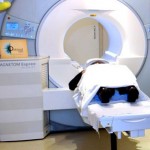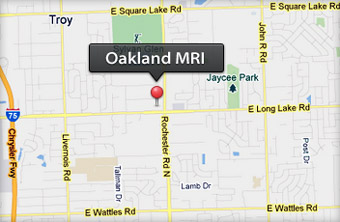 Body scans could soon replace invasive biopsies in detecting cancer tumours, leading to earlier diagnosis of the disease, a new study has suggested.
Body scans could soon replace invasive biopsies in detecting cancer tumours, leading to earlier diagnosis of the disease, a new study has suggested.
Currently mammograms or CT scans can detect tumours, but a biopsy, where suspect cells are removed and examined under a microscope, can take days before the results are available.
Now a preliminary study by Johns Hopkins University School of Medicine using lab-grown cells raises the possibility of cancer diagnosis without invasive biopsies.
Researchers believe MRI scans, with the results available much sooner, could identify cancers noninvasively by detecting telltale sugar molecules shed by the outer membranes of cells.
The scans could also be used to detect cancer at a much earlier stage, monitor response to chemotherapy or guide biopsies to ensure sampling of the most malignant part of a tumour.
Professor of radiology and radiological science Dr Jeff Bulte in the Institute for Cell Engineering said: “We think this is the first time scientists have found a use in imaging cellular slime.
“As cells become cancerous, some proteins on their outer membranes shed sugar molecules and become less slimy, perhaps because they’re crowded closer together.
“If we tune the MRI to detect sugars attached to a particular protein, we can see the difference between normal and cancerous cells.”
The research published in the journal Nature Communications builds on previous findings that indicate glucose can be detected by a fine-tuned MRI technique based on the unique way it interacts with surrounding water molecules without administering dyes.
Other researchers have used MRI but needed injectable dyes to image proteins on the outside of cells that lost their sugar.
In the study Prof Bulte’s team compared MRI readings from proteins known as mucins with and without sugars attached to see how the signal changed.
They then looked for that signal in four types of lab-grown cancer cells and detected markedly lower levels of mucin-attached sugars than in normal cells.
Research associate Dr Xiaolei Song said this was the first time a property integral to cancer cells, rather than an injected dye, has been used to detect those cells.
She said: “The advantage of detecting a molecule already inside the body is that we can potentially image the entire tumour,”
“This often isn’t possible with injected dyes because they only reach part of the tumour. Plus, the dyes are expensive.”
Further research will look to see if MRI scans can distinguish more types of cancerous tumours from benign masses in live mice.

